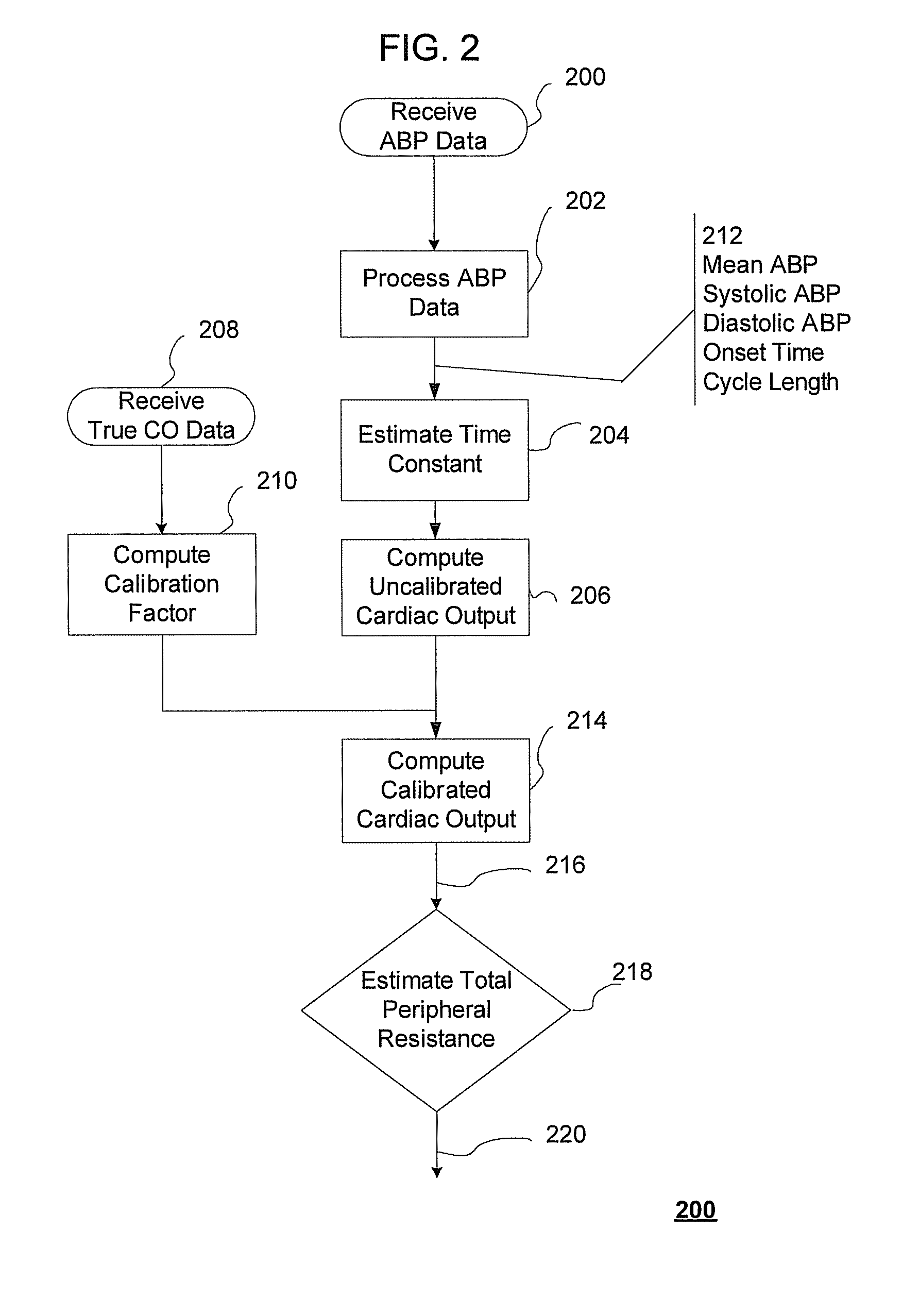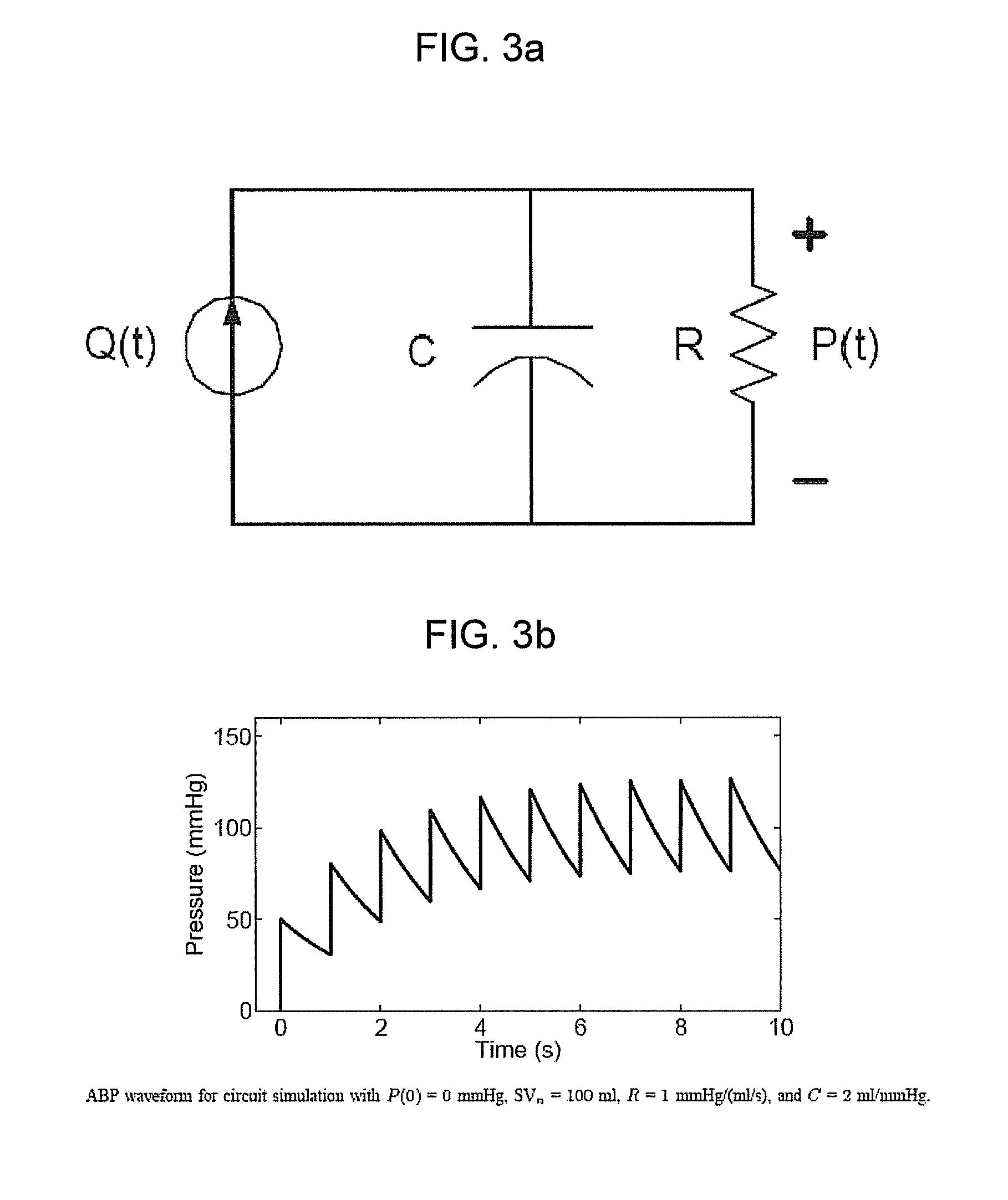Systems and methods for model-based estimation of cardiac output and total peripheral resistance
a model-based, cardiac output technology, applied in the field of cardiac output and total peripheral resistance estimation, can solve the problems of high invasiveness, inability to measure co intermittently, and the inability of the catheter to improve patient outcom
- Summary
- Abstract
- Description
- Claims
- Application Information
AI Technical Summary
Benefits of technology
Problems solved by technology
Method used
Image
Examples
Embodiment Construction
[0044]To provide an overall understanding of the invention, certain illustrative embodiments will now be described. However, it will be understood by one of ordinary skill in the art that the methods described herein may be adapted and modified as is appropriate for the application being addressed and that the systems and methods described herein may be employed in other suitable applications, and that such other additions and modifications will not depart from the scope hereof.
[0045]FIG. 1 is a block diagram of a cardiac output estimation system 100 in which the present invention's teachings may be implemented. The cardiac output estimation system 100 includes blood pressure measuring device 102, processor 104, memory 106 e.g. Read-Only Memory (ROM), display 108, and user interface 110. The processor 104 operates on blood pressure data in accordance with computer executable instructions loaded into memory 106. The instructions will ordinarily have been loaded into the memory from l...
PUM
 Login to View More
Login to View More Abstract
Description
Claims
Application Information
 Login to View More
Login to View More - R&D
- Intellectual Property
- Life Sciences
- Materials
- Tech Scout
- Unparalleled Data Quality
- Higher Quality Content
- 60% Fewer Hallucinations
Browse by: Latest US Patents, China's latest patents, Technical Efficacy Thesaurus, Application Domain, Technology Topic, Popular Technical Reports.
© 2025 PatSnap. All rights reserved.Legal|Privacy policy|Modern Slavery Act Transparency Statement|Sitemap|About US| Contact US: help@patsnap.com



